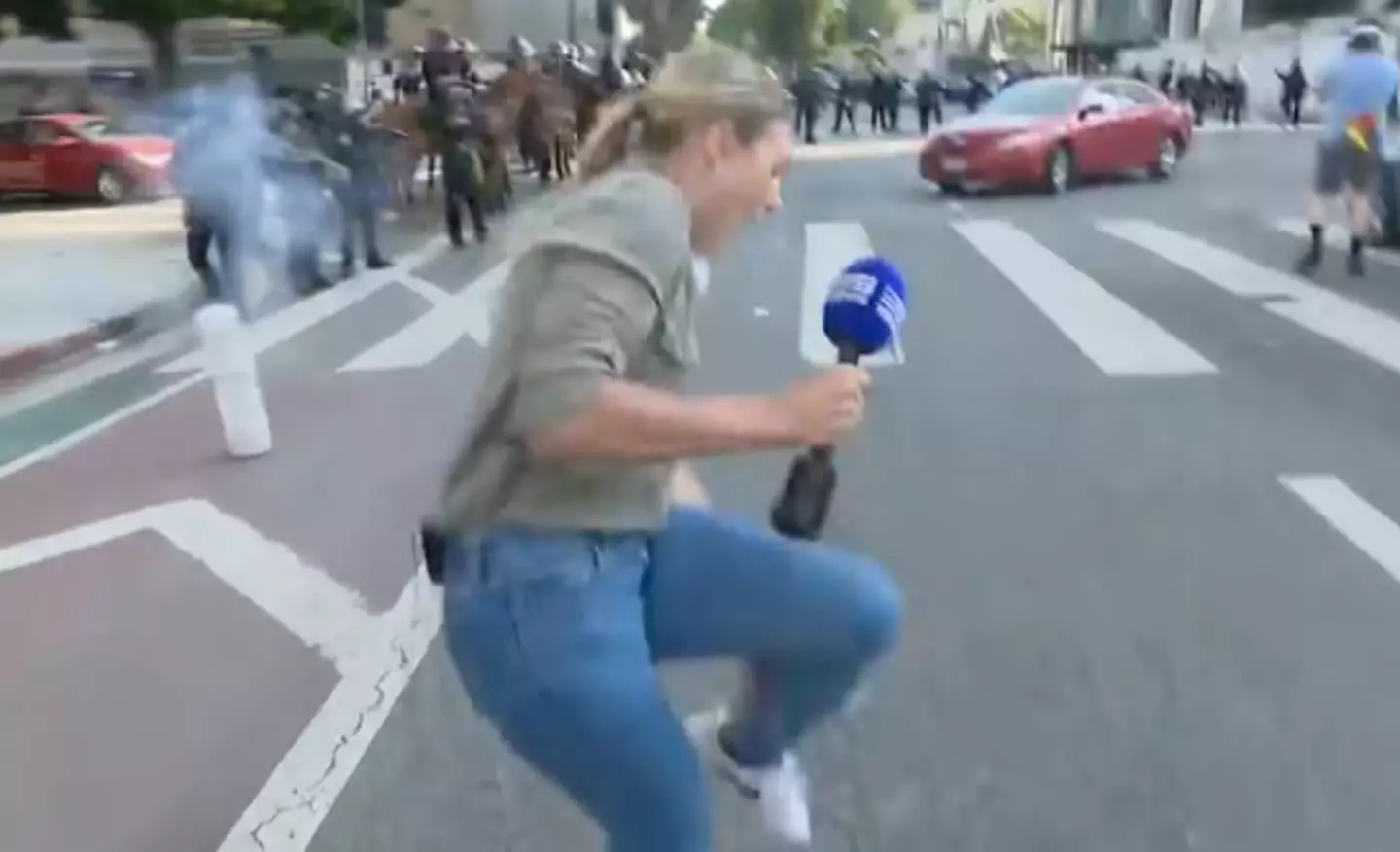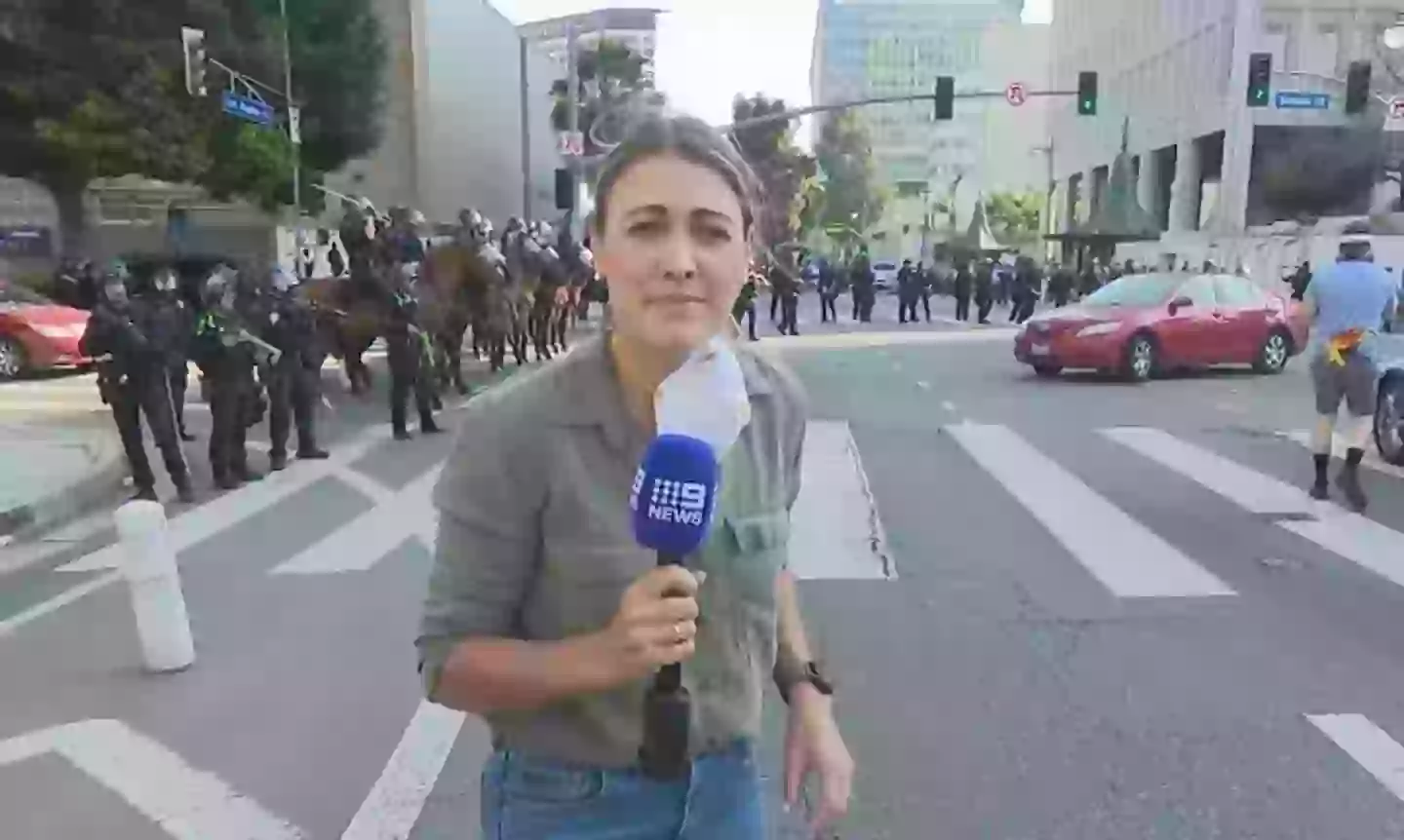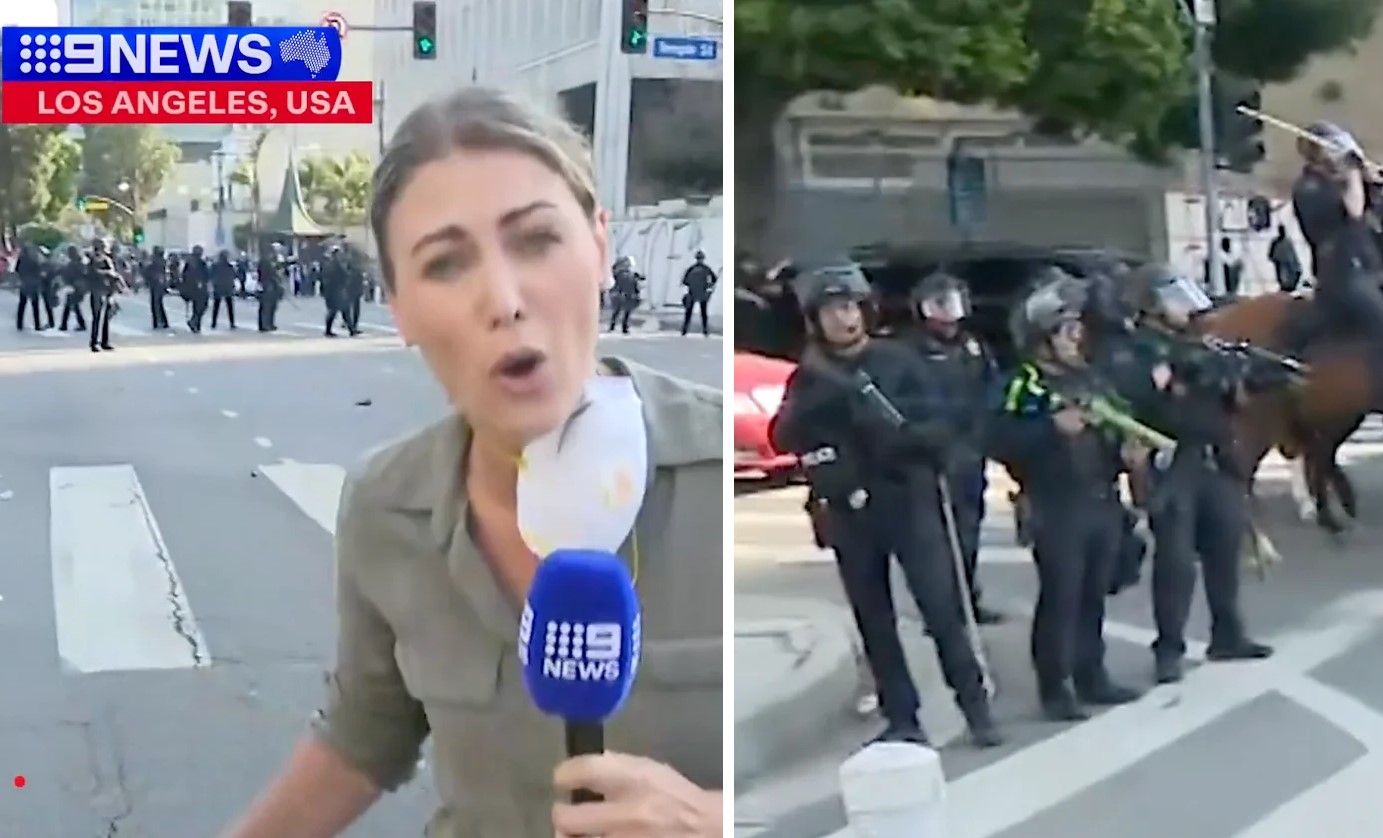In moments of unrest, when chaos floods the streets and public trust fractures, journalists remain at the heart of the storm. They are the eyes and ears of the public, often navigating unpredictable—and dangerous—environments to deliver the truth. But when those tasked with documenting a story become part of it, the implications extend far beyond a headline.
A disturbing incident during recent unrest in Los Angeles has reignited conversations about the role of law enforcement, the rights of the press, and how quickly a peaceful demonstration can devolve into violence. What unfolded on the streets of downtown LA not only caught the world’s attention but also struck a deeply personal chord across international borders.
It began as a tense but contained protest—one of many in response to the U.S. administration’s tightening immigration policies. The city, already on edge from previous demonstrations, braced for what officials hoped would remain orderly civic action. Instead, it became the backdrop for an alarming confrontation between police and demonstrators—and one particularly shocking moment involving an international news crew.
A Journalist in the Line of Fire
Lauren Tomasi, a U.S.-based correspondent for Australia’s Nine News, was on assignment in Los Angeles to cover a protest outside the Metropolitan Detention Centre. This facility had become a focal point for demonstrators opposing President Donald Trump’s controversial crackdown on undocumented immigrants, including high-profile ICE raids earlier that week.
As evening fell on June 8, 2025, what began as a peaceful protest escalated into a volatile situation. Reports indicate that tensions between protesters and law enforcement intensified after several incidents of property damage—including overturned trash bins, car fires, and graffiti on federal buildings. The Los Angeles Police Department (LAPD), attempting to control the situation, issued an “unlawful assembly” declaration for the Civic Center district.
Tomasi and her camera crew positioned themselves on East Temple Street near the detention facility. During a live broadcast, she described the atmosphere as shifting dramatically: “After hours of standing off, this situation has now rapidly deteriorated,” she told viewers. “The LAPD is moving in on horseback, firing rubber bullets at protesters, moving them on through the heart of LA.”
Seconds later, something unimaginable happened.
The Shot Caught on Camera
As Tomasi reported from the scene, footage captured by Nine News’ camera operator recorded the precise moment when she was hit. The video shows a line of officers approaching, followed by a sudden burst of rubber bullet fire. One projectile struck Tomasi in the upper body, causing a brief moment of panic both on-screen and among the nearby crowd.
A voice off-camera can be heard yelling, “You just f**king shot the reporter!”—a statement that has since gone viral.
Despite the shock of the incident, Tomasi remained composed. “I’m good,” she responded, attempting to reassure her crew and viewers, though visibly shaken. The live feed cut shortly afterward.

Nine News later confirmed that both Tomasi and her camera operator were safe. In an official statement, the network said:
“Lauren Tomasi was struck by a rubber bullet. Lauren and her camera operator are safe and will continue their essential work covering these events. This incident serves as a stark reminder of the inherent dangers journalists can face while reporting from the frontlines of protests, underscoring the importance of their role in providing vital information.”
The Protests: Context and Escalation
The Los Angeles protest was one of several that erupted across major U.S. cities in response to the Trump administration’s aggressive immigration policies. Following a week of immigration enforcement operations, during which dozens of individuals were detained, public outrage boiled over.
Downtown LA, especially near government buildings and federal facilities, quickly became a magnet for activists and concerned citizens. Demonstrators gathered to demand the release of detainees, an end to family separations, and greater oversight of federal immigration agencies.
Police maintained a heavy presence throughout the day, with multiple units patrolling the area on foot, in vehicles, and on horseback. By early evening, the protest had grown significantly in size, prompting LAPD’s Central Division to issue a city-wide advisory declaring an unlawful assembly in the area.
On social media, the LAPD warned:
“An UNLAWFUL ASSEMBLY has been declared for the Civic Center area of DTLA. A number of people have been arrested. All people are to stay away from the Civic Center area.”
Another post directly addressed the press:
“To our media partners, please keep a safe distance from active operations.”
Despite the warnings, journalists remained on-site to cover the event, adhering to press protocols and clearly identifying themselves with media badges and equipment.
Diplomatic Fallout and Political Reactions
The incident didn’t remain confined to American headlines. Within hours, Australian officials demanded answers. Among the most vocal was Senator Sarah Hanson-Young of the Australian Greens, who called the shooting of a foreign journalist by police “simply shocking” and “completely unacceptable.”
Hanson-Young urged Prime Minister Anthony Albanese to formally demand an explanation from the LAPD, saying:
“The first thing he [Albanese] must tell the president is to stop shooting at our journalists. Freedom of the press is a fundamental pillar of a strong, functioning democracy.”
Calls for diplomatic intervention echoed across Australia’s Parliament, with several lawmakers expressing concern about the safety of Australian nationals working abroad—especially those in high-risk reporting roles.
Meanwhile, press freedom organizations condemned the shooting. The Committee to Protect Journalists (CPJ) issued a statement calling for a transparent investigation into the LAPD’s handling of the situation, and urging local authorities to review use-of-force protocols during public protests.

Nine confirmed that ‘Lauren and her camera operator are safe’ (Nine)
Was It Intentional?
While the footage appears to show an officer aiming in the direction of the camera crew, it remains unclear whether Tomasi was deliberately targeted. The LAPD has not released an official statement addressing the incident directly, nor have they confirmed whether an internal review is underway.
However, legal experts note that even if the shot was accidental, it raises serious concerns about training, engagement rules, and situational awareness during crowd control operations. Media crews are typically required to maintain a visible presence—with microphones, camera rigs, and press vests—but confusion in chaotic protest environments is common.
This is not the first time a journalist has been injured during a protest in the U.S., but the international dimension of this case—and the presence of clear visual evidence—has magnified the public response.
A Broader Pattern of Risk
Journalist safety during protests has become an increasingly urgent issue. Over the past decade, there has been a documented rise in incidents involving reporters being harassed, detained, or injured while covering civil unrest.
Organizations like Reporters Without Borders (RSF) and the CPJ have tracked hundreds of such incidents since 2020 alone. In many cases, journalists have reported being caught in the crossfire—often during law enforcement dispersals or when protests devolve into riots.
The rise of smartphones and livestreams has helped expose these encounters, but it has also made journalists more vulnerable, as they become high-profile targets in polarized environments.
Tomasi’s case adds to the growing archive of evidence suggesting that press identification does not always guarantee protection.
A Moment That Won’t Be Forgotten
As images of the moment spread across news outlets and social media, public sentiment has coalesced around one simple truth: journalists should never have to fear for their lives while doing their jobs.
Tomasi’s resolve in the aftermath—calmly continuing to report, reassuring colleagues, and reaffirming her commitment to the story—has drawn praise from across the media industry.
Her network, Nine News, reiterated their support for her and their intention to continue covering protests and political events in the United States. The message was clear: journalism does not stop at the first sign of danger. If anything, it becomes more essential.
Trump’s Response and the Federal Role
While President Trump has not commented on Tomasi’s shooting specifically, his rhetoric around protests and press coverage has come under renewed scrutiny. Critics argue that the administration’s encouragement of aggressive policing tactics has contributed to a culture where media figures are seen as adversaries rather than observers.
The president recently urged the LAPD to “bring in the troops” after LAPD Chief Jim McDonnell hinted at the need for reinforcements. The National Guard was later deployed to several areas around the city, signaling a more militarized approach to civil unrest.
In a press conference, Chief McDonnell admitted:
“We were overwhelmed as far as the number of people out there engaged in this type of activity and the type of things they’re doing.”
With the streets on edge and trust in institutions deteriorating, the stakes for how these events are managed—and how journalists are treated—continue to climb.
Where Things Stand Now
Lauren Tomasi has since returned to reporting, and Nine News continues to investigate the incident. Legal advisors and press advocacy groups are pushing for LAPD transparency and accountability, especially regarding any documentation of the event from bodycams or internal logs.
Australian diplomats are also in contact with American counterparts to ensure the safety of their citizens and to demand accountability.
What remains to be seen is whether this moment will result in any lasting change—either in law enforcement tactics or in how the press is perceived during public unrest.
What is certain, however, is that a single rubber bullet fired on a chaotic night in Los Angeles has reignited a global conversation about the rights of reporters and the responsibilities of those in power.

